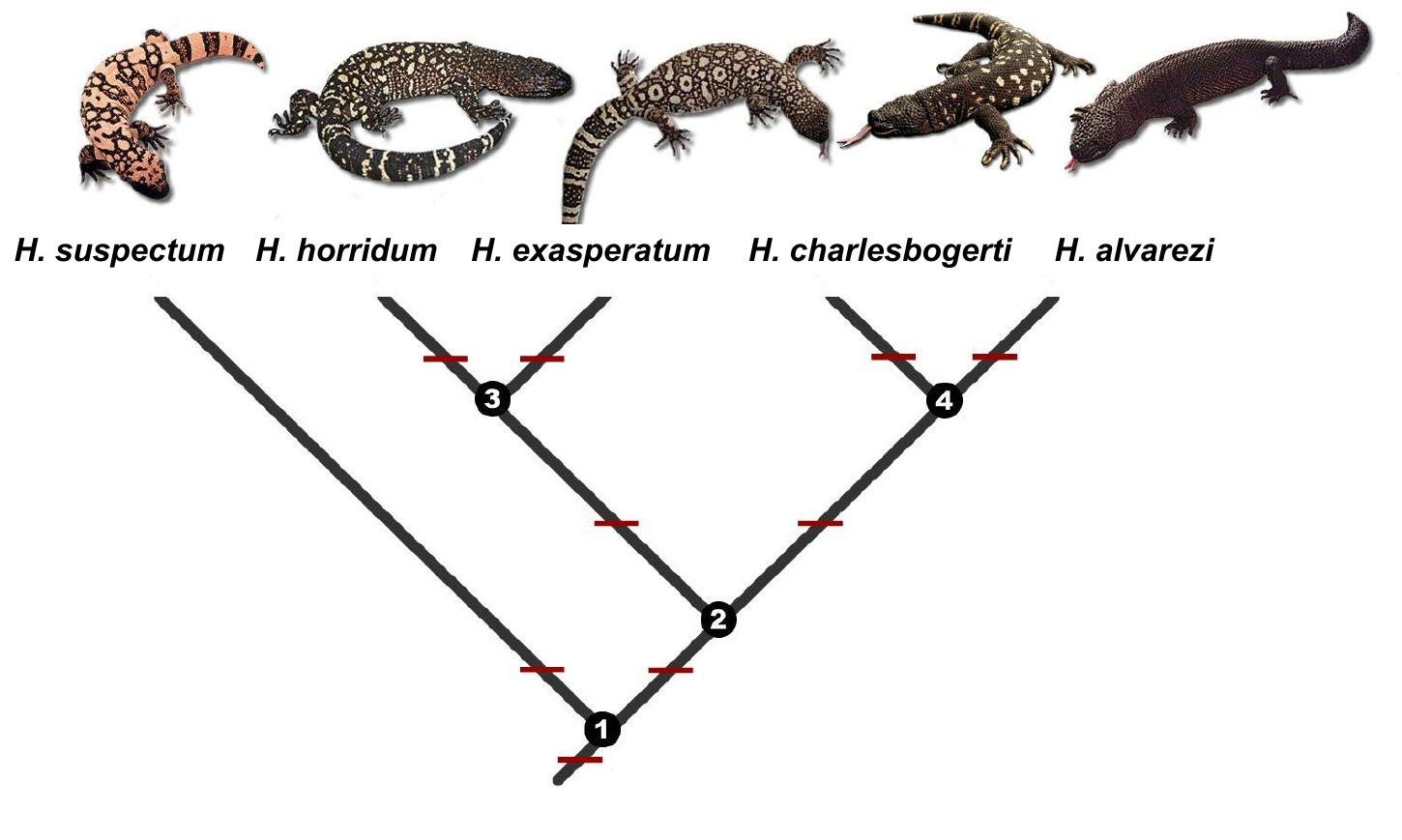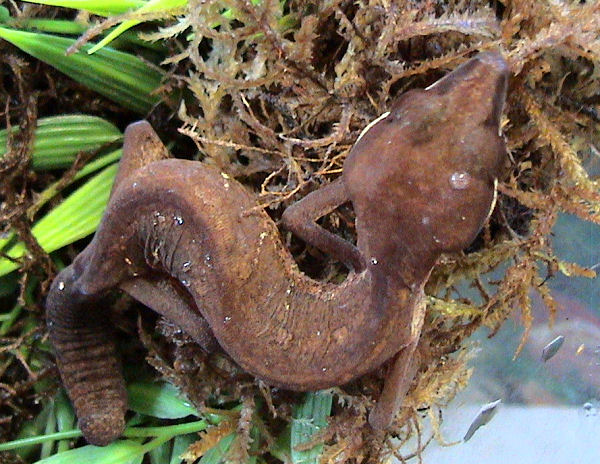|
List Of Reptiles Of Arizona
This is a list of the known extant reptiles of Arizona. The Arizona state reptile is the Arizona ridge-nosed rattlesnake ('' Crotalus willardi willardi''). Turtles and tortoises Chelydridae *Common snapping turtle (''Chelydra serpentina'') Emydidae *Painted turtle (''Chrysemys picta'') *Desert box turtle (''Terrapene ornata luteola'') * Red-eared slider (''Trachemys scripta elegans'') Kinosternidae *Arizona mud turtle (''Kinosternon stejnegeri'') *Yellow mud turtle (''Kinosternon flavescens'') *Sonora mud turtle (''Kinosternon sonoriense'') Testudinidae * Desert tortoise (''Gopherus agassizii'') * Sonoran Desert tortoise (''Gopherus morafkai'') Trionychidae *Spiny softshell turtle (''Apalone spinifera'') Lizards Anguidae * Madrean alligator lizard (''Elgaria kingii'') Crotaphytidae Eublepharidae *Western banded gecko (''Coleonyx variegatus'') Gekkonidae * Mediterranean house gecko (''Hemidactylus turcicus'') Helodermatidae * Gila monster (' ... [...More Info...] [...Related Items...] OR: [Wikipedia] [Google] [Baidu] |
Reptiles
Reptiles, as most commonly defined are the animals in the Class (biology), class Reptilia ( ), a paraphyletic grouping comprising all sauropsid, sauropsids except birds. Living reptiles comprise turtles, crocodilians, Squamata, squamates (lizards and snakes) and rhynchocephalians (tuatara). As of March 2022, the Reptile Database includes about 11,700 species. In the traditional Linnaean taxonomy, Linnaean classification system, birds are considered a separate class to reptiles. However, crocodilians are more closely related to birds than they are to other living reptiles, and so modern Cladistics, cladistic classification systems include birds within Reptilia, redefining the term as a clade. Other cladistic definitions abandon the term reptile altogether in favor of the clade Sauropsida, which refers to all amniotes more closely related to modern reptiles than to mammals. The study of the traditional reptile Order (biology), orders, historically combined with that of modern amphi ... [...More Info...] [...Related Items...] OR: [Wikipedia] [Google] [Baidu] |
Trionychidae
The Trionychidae are a taxonomic family of a number of turtle genera, commonly known as softshell turtles. The family was erected by Leopold Fitzinger in 1826. Softshells include some of the world's largest freshwater turtles, though many can adapt to living in highly brackish areas. Members of this family occur in Africa, Asia, and North America, with extinct species known from Australia. Most species have traditionally been included in the genus ''Trionyx'', but the vast majority have since been moved to other genera. Among these are the North American ''Apalone'' softshells that were placed in ''Trionyx'' until 1987. Characteristics They are called "softshell" because their carapaces lack horny scutes (scales), though the spiny softshell, ''Apalone spinifera'', does have some scale-like projections, hence its name. The carapace is leathery and pliable, particularly at the sides. The central part of the carapace has a layer of solid bone beneath it, as in other turtles, but t ... [...More Info...] [...Related Items...] OR: [Wikipedia] [Google] [Baidu] |
Phrynosomatidae
The Phrynosomatidae are a diverse family of lizards, sometimes classified as a subfamily (Phrynosomatinae), found from Panama to the extreme south of Canada. Many members of the group are adapted to life in hot, sandy deserts, although the spiny lizards prefer rocky deserts or even relatively moist forest edges, and the short-horned lizard lives in prairie or sagebrush environments. The group includes both egg-laying and viviparous species, with the latter being more common in species living at high elevations. The earliest fossil remains of this group are known from the Late Cretaceous of Mongolia and belong to the genus ''Desertiguana''. As phrynosomatids are presently known only from North America, these remains indicate that phrynosomatids likely had a wider distribution in prehistoric times. Genera The Phrynosomatidae are organised into 9 genera in this family. The earless taxa (''Cophosaurus'' and ''Holbrookia'') are sister genera. Family Phrynosomatidae * ''Callisaurus' ... [...More Info...] [...Related Items...] OR: [Wikipedia] [Google] [Baidu] |
Iguanidae
The Iguanidae is a family of lizards composed of the iguanas, chuckwallas, and their prehistoric relatives, including the widespread green iguana. Taxonomy Iguanidae is thought to be the sister group to the collared lizards (family Crotaphytidae); the two groups likely diverged during the Late Cretaceous, as that is when ''Pristiguana'' and ''Pariguana'', the two earliest fossil genera, are known from. The subfamily Iguaninae, which contains all modern genera, likely originated in the earliest Paleocene, at about 62 million years ago. The most basal extant genus, '' Dipsosaurus,'' diverged from the rest of Iguaninae during the late Eocene, about 38 million years ago, with '' Brachylophus'' following a few million years later at about 35 million years ago, presumably after its dispersal event to the Pacific. All other modern iguana genera formed in the Neogene period. A phylogenetic tree of Iguaninae is shown here: Description Iguanas and iguana-type species are divers ... [...More Info...] [...Related Items...] OR: [Wikipedia] [Google] [Baidu] |
Gila Monster
The Gila monster (''Heloderma suspectum'', ) is a species of venomous lizard native to the Southwestern United States and the northwestern Mexican state of Sonora. It is a heavy, typically slow-moving reptile, up to long, and it is the only venomous lizard native to the United States. Its venomous close relatives, the four beaded lizards (all former subspecies of ''Heloderma horridum'') inhabit Mexico and Guatemala. The Gila monster is sluggish in nature, so it is not generally dangerous and very rarely poses a real threat to humans. However, it has a fearsome reputation and is sometimes killed in spite of the species being protected by state law in Arizona. History The name "Gila" refers to the Gila River Basin in the U.S. states of Arizona and New Mexico, where the Gila monster was once plentiful. ''Heloderma'' means "studded skin", from the Ancient Greek words (), "the head of a nail or stud", and (), "skin". ''Suspectum'' comes from the describer, paleontologist Edwa ... [...More Info...] [...Related Items...] OR: [Wikipedia] [Google] [Baidu] |
Helodermatidae
The Helodermatidae or beaded lizards are a small family of lizards endemic to North America today, but formerly more widespread in the ancient past. Traditionally, the Gila monster and the Mexican beaded lizard were the only species recognized, although the latter has recently been split into several species. While the fossil record of this family may date back to as far as the Cretaceous with genera such as '' Primaderma'' and '' Paraderma'' of North America, the oldest definitive members of the Helodermatidae date to the Early Oligocene, with ''Lowesaurus matthewi'' from North America (Nebraska) and ''Euheloderma gallicum'' from Europe Europe is a large peninsula conventionally considered a continent in its own right because of its great physical size and the weight of its history and traditions. Europe is also considered a Continent#Subcontinents, subcontinent of Eurasia ... (France). References {{Reflist Lizard families Taxa named by John Edward Gray ... [...More Info...] [...Related Items...] OR: [Wikipedia] [Google] [Baidu] |
Mediterranean House Gecko
The Mediterranean house gecko (''Hemidactylus turcicus'') is a species of house gecko common to the Mediterranean area which has spread to many parts of the world. It is commonly referred to as the Turkish gecko as represented in its Latin name and also as the moon lizard because it emerges in the evening. A study in Portugal found ''H. turcicus'' to be totally nocturnal, with the highest activity peak around 02:00. They are insectivorous, rarely exceeding in length, have large, lidless eyes with elliptical pupils, and purple - or tan-colored skin with black spots, often with stripes on the tail. Their bellies or undersides are somewhat translucent. It is currently unknown what impact the geckos have on native wildlife in the regions they have been introduced to. In many parts of the world the range of ''H. turcicus'' is increasing, and unlike many other reptiles, they appear to be highly resistant to pesticides. The increase may be explained as a consequence of having few pre ... [...More Info...] [...Related Items...] OR: [Wikipedia] [Google] [Baidu] |
Gekkonidae
Gekkonidae (the common geckos) is the largest family of geckos, containing over 950 described species in 64 genera. Members of the Gekkonidae comprise many of the most widespread gecko species, including house geckos (''Hemidactylus''), tokay geckos (''Gekko''), day geckos (''Phelsuma''), mourning geckos (''Lepidodactylus'') and dtellas (''Gehyra''). Gekkonid geckos occur globally and are particularly species-rich in tropical areas. Hemidactylus geckos are one of the most species-rich and widely distributed of all reptile genera. Carranza, S., and E. .. Arnold. "Systematics, Biogeography, and Evolution of Hemidactylus Geckos (Reptilia: Gekkonidae) Elucidated Using Mitochondrial DNA Sequences." Molecular Phylogenetics and Evolution, vol. 38, no. 2, Elsevier Inc, 2006, pp. 531–45, . Fossils The earliest known gekkonidae fossil record '' Yantarogekko'' was found in Eocene-Aged Baltic amber. Distribution Species within the Gekkonidae family can be located in every warm land ... [...More Info...] [...Related Items...] OR: [Wikipedia] [Google] [Baidu] |
Western Banded Gecko
The western banded gecko (''Coleonyx variegatus'') is a species of lizard in the family Eublepharidae. The species is native to the southwestern United States and adjacent northwestern Mexico. Five subspecies are recognized. Geographic range In the United States, ''C. variegatus'' is found in Arizona, southern California, southwestern New Mexico, Nevada, and Utah. In California, it is found in the Mojave and Sonoran deserts In Mexico, it is found in northwestern Baja California and Sonora. Subspecies Five subspecies of ''C. variegatus'' are recognized as being valid, including the nominotypical subspecies. *''Coleonyx variegatus abbotti'' – San Diego banded gecko *''Coleonyx variegatus bogerti'' – Tucson banded gecko *''Coleonyx variegatus sonoriensis'' – Sonoran banded gecko *''Coleonyx variegatus utahensis'' – Utah banded gecko *''Coleonyx variegatus variegatus'' – desert banded gecko ''Nota bene'': A trinomial authority in parentheses indicates that the ... [...More Info...] [...Related Items...] OR: [Wikipedia] [Google] [Baidu] |
Eublepharidae
The Eublepharidae are a family of geckos (Gekkota) consisting of 43 described species in six genera. They occur in Asia, Africa and North America. Eublepharid geckos lack adhesive toepads and, unlike other geckos, have movable eyelids, thus commonly called eyelid geckos. Leopard geckos (''Eublepharis macularius'') and African fat-tailed geckos (''Hemitheconyx caudicinctus'') are popular pet lizards. Genera The following genera are considered members of the Eublepharidae: References Geckos Geckos are small, mostly carnivorous lizards that have a wide distribution, found on every continent except Antarctica. Belonging to the infraorder Gekkota, geckos are found in warm climates throughout the world. They range from . Geckos ar ... Lizard families Taxa named by George Albert Boulenger {{gecko-stub de:Eublepharidae sv:Eublepharidae ... [...More Info...] [...Related Items...] OR: [Wikipedia] [Google] [Baidu] |
Crotaphytidae
The Crotaphytidae, or collared lizards, are a family of desert-dwelling reptiles native to the Southwestern United States and northern Mexico. Alternatively they are recognized as a subfamily, Crotaphytinae, within the clade Pleurodonta. They are very fast-moving animals, with long limbs and tails; some species are capable of achieving bipedal running at top speed. This species is carnivorous, feeding mainly on insects and smaller lizards. The two genera contain 12 species. Technical characters *Femoral pores present *Interparietal scale small (distinctly smaller than ear opening) *Never have an enlarged middorsal scale row or fringe *Never have a divided rostral scale *No bony spines or projecting ridges on their heads *No scales projecting over their ears, and no scales forming a prominent fringe on sides of toes as in Phrynosomatidae Species Genus ''Gambelia'' ''Dahms Tierleben''. www.dahmstierleben.de/systematik/Reptilien/Squamata/Iguania/crotaphytidae. (leopard lizards) * ... [...More Info...] [...Related Items...] OR: [Wikipedia] [Google] [Baidu] |





.jpg)
